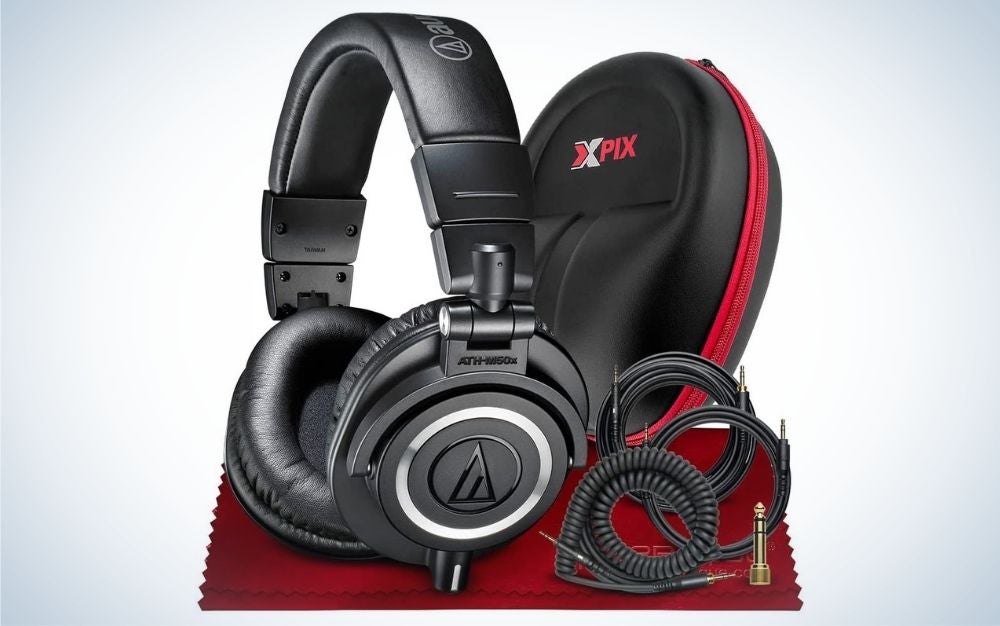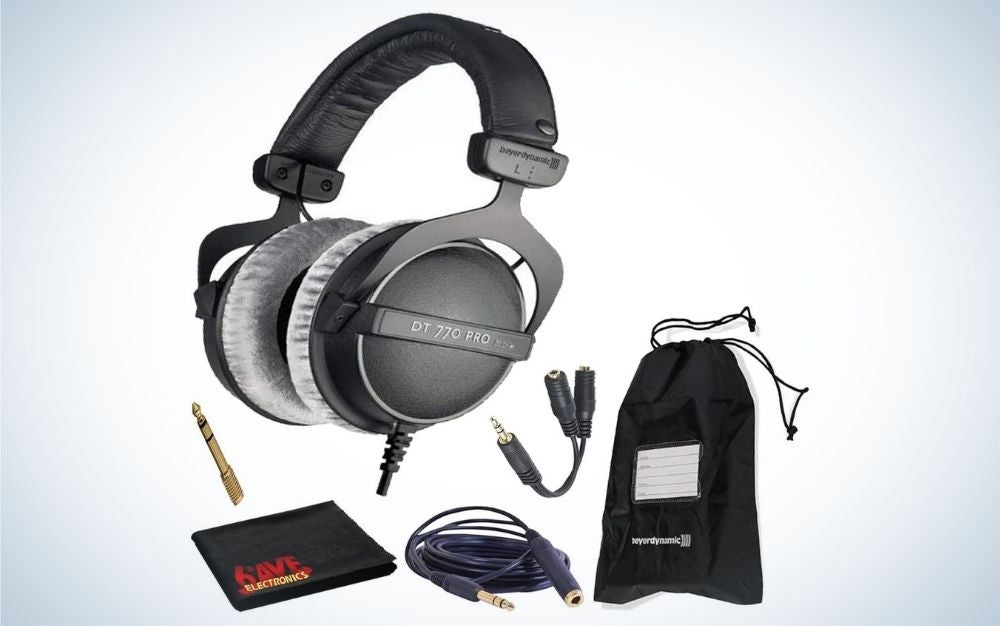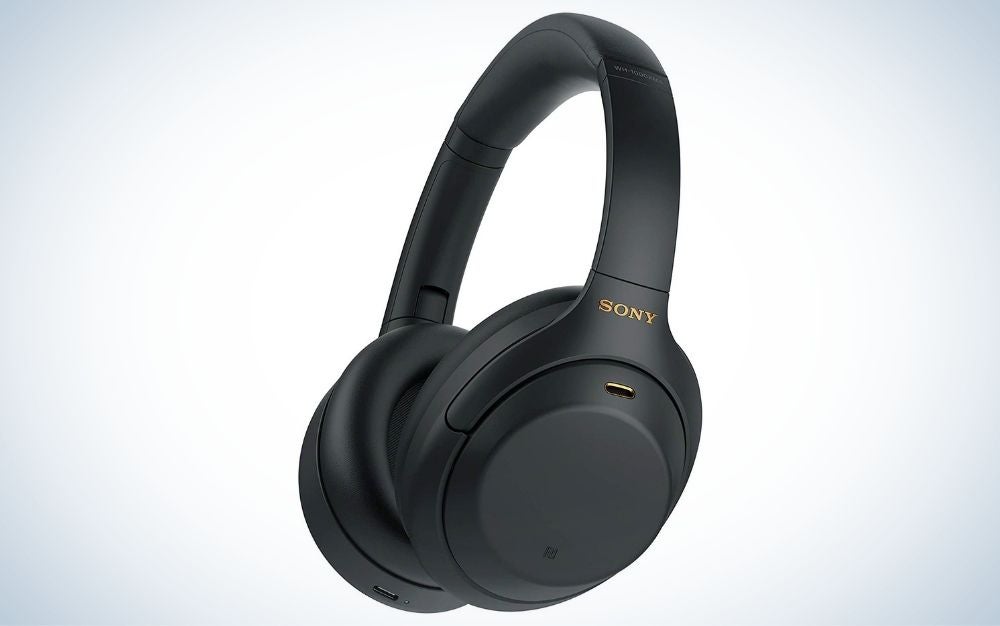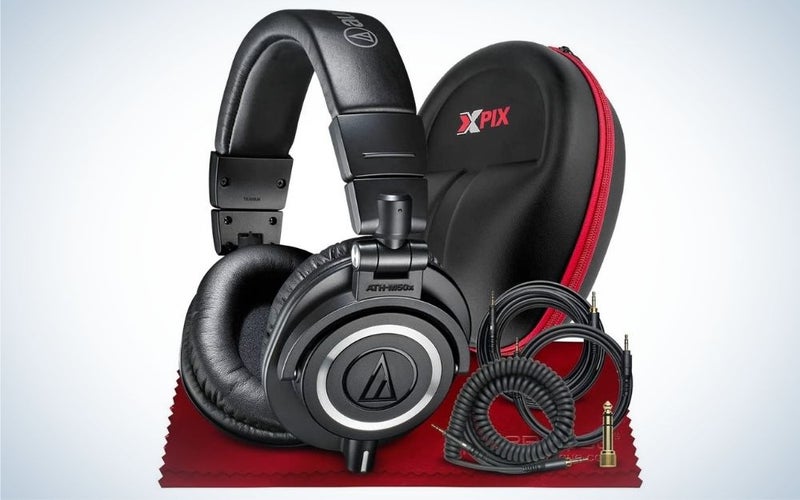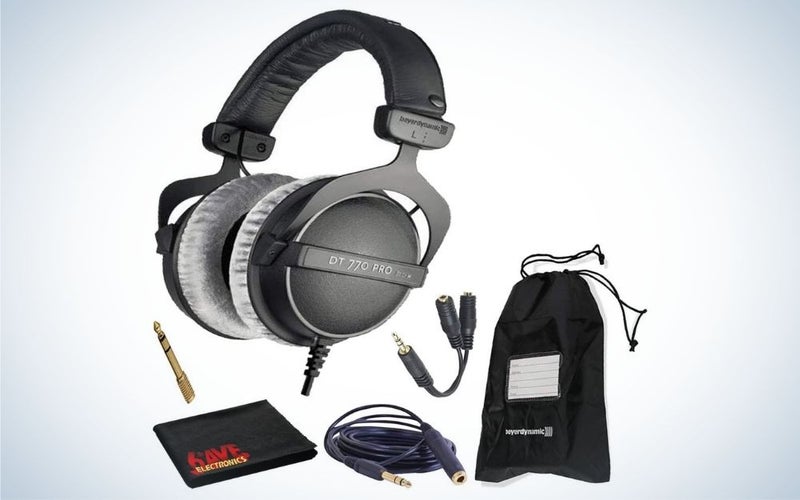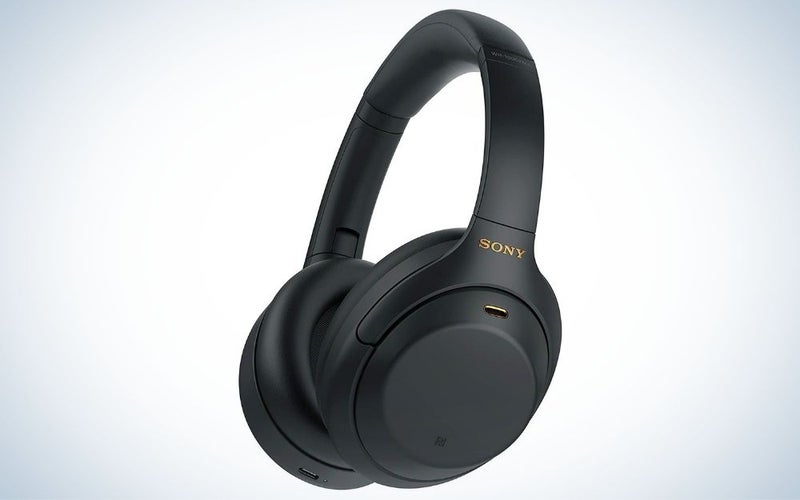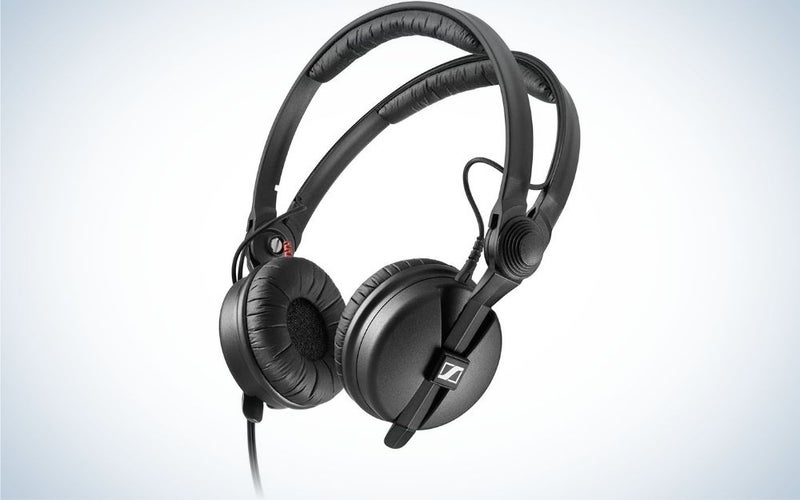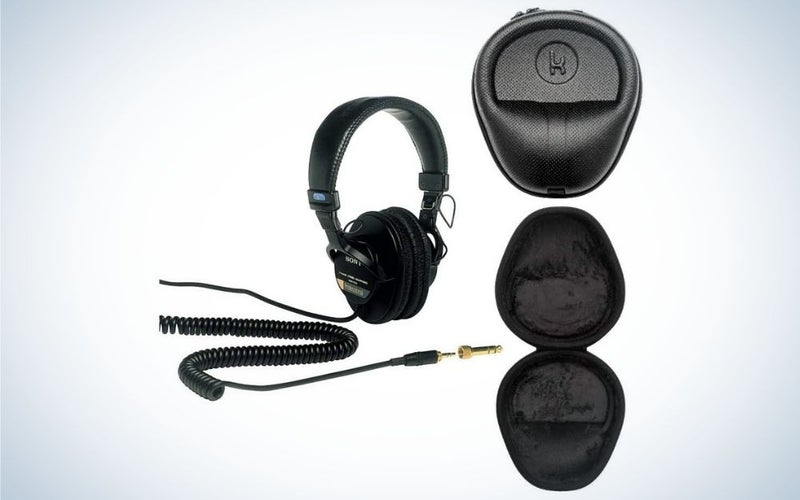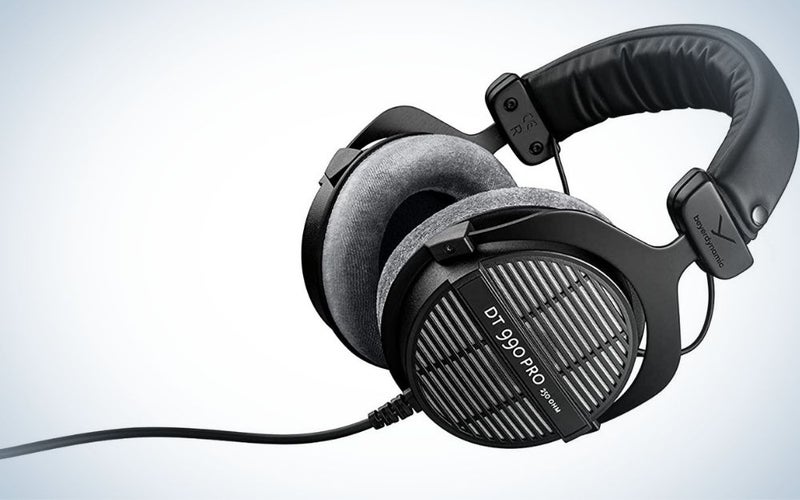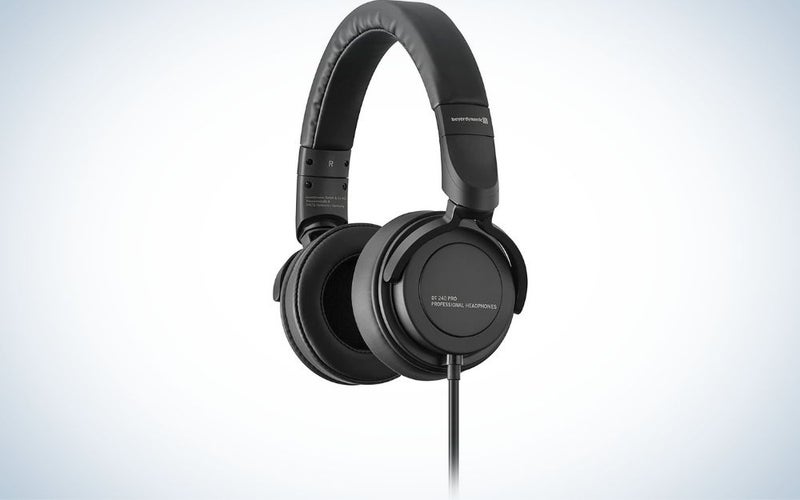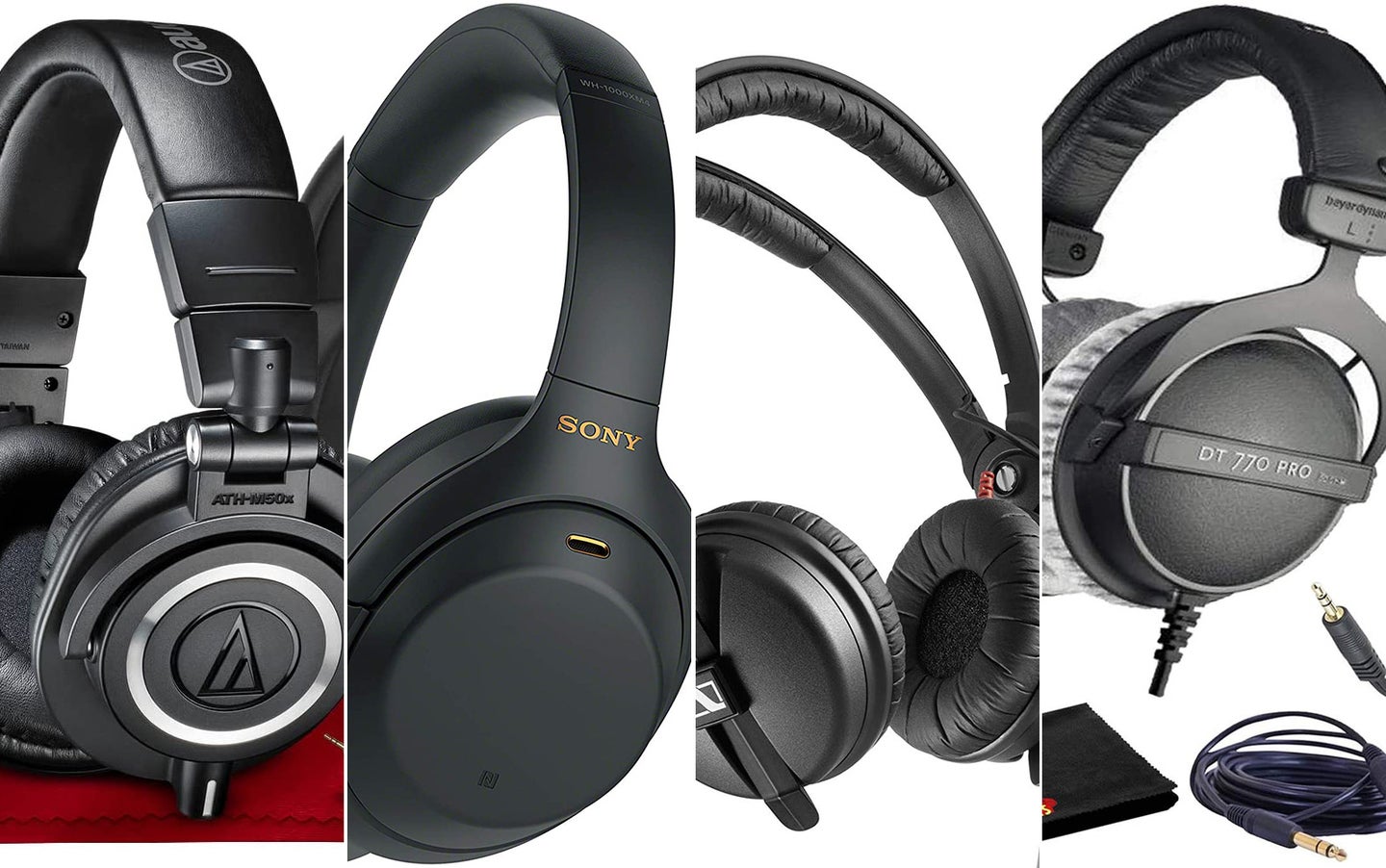
There will always be a place for high-end headphones for video editing in a videographer’s workflow. But now more than ever, video editing is done on the go. Because of this, we need great headphones to complement our mobile setups. As our workloads extend and diversify, we also expect more from a pair of cans. Video professionals often use the same headphones to monitor recordings in the field, edit shots in shared workspaces, and even sign off on final mixes from our homes.
Prosumer headphones often blur the boundaries with the studio headphone market creating a confusing cloud of frequency response charts, ohm ratings, noise-canceling technologies, and wireless options. That’s before we consider comfort, weight, and ergonomics for a piece of gear we’ll be strapping to our heads for hours at a time. It’s a complex picture even for the most audio-savvy videographers, so we’re here to help find the best headphones for video editing that suit your needs and budget.
- Best overall: Audio-Technica ATH-M50X
- Most comfortable: Beyerdynamic DT 770 PRO
- Best wireless: Sony WH-1000XM4
- Best on-ear design: Sennheiser HD25
- Best under $100: Sony MDR-7506
- Best open back: Beyerdynamic DT 990 PRO
- Best budget: Beyerdynamic DT 240 Pro
Things to consider before buying headphones for video work
It’s easy to read a brand’s website describing their headphones and think that frequency range and ohm ratings are the most important factors when choosing a product. This technical data, however, rarely makes a difference in day-to-day use.
Frequency range
Frequency range tells you how low a rumble and how high a squeal the headphones can reproduce. It is measured in Hertz, which just means the cycles per second of a sound wave. Most humans with good hearing can hear from 20 Hz all the way up to around 20,000 Hz. Many headphones can reproduce frequencies well above and below this. While this is interesting information to know, you simply won’t be able to hear the added frequency range. Instead, look for headphones with good transparency and accuracy across the frequency ranges you’ll be using.
Ohm ratings
Ohm ratings are slightly more complicated but, in short, refer to the current drawn from the headphone amplifier in your audio interface, laptop, or smartphone. While most headphones will work with most amplifiers, pairing the right headphones with the right amplifier can improve volume and clarity. Lower Ohm ratings around 32-35 ohms will work best with smartphones and laptops, while ratings around 250 ohms should only be used with audio interfaces or dedicated mixers. 80 ohm headphones are good all-rounders for those who work between studio settings and mobile devices.
Comfort is king
When considering different headphone options, we can’t overstate the importance of comfort and durability. Performance, clarity, fidelity, and response count for nothing if you’re not happy wearing a certain pair of headphones throughout the working day for years to come. Many creatives develop a long-term relationship with a model of headphones, investing hours in getting to know its unique frequency curve and working confidently from the audio reference it provides. This kind of insight is only possible with a pair of headphones that fit well with your physical features and meet your comfort preferences.
Open-back or closed-back
You’ll see headphones described as being either open or closed-back. These terms refer to if there are holes in the back of the headphone enclosure that allow the drivers to move more freely. Open-backed headphones generally don’t suffer from an undesired low-frequency boost that can occur in closed-back models. They are also often described as clearer sounding. However, they provide little to no isolation from ambient noise and sound louder to the people (or microphones) around you. On the other hand, closed-back headphones are much less likely to annoy your co-workers and can provide great isolation from ambient noise. They also tend to be more durable as there are fewer places for dirt and moisture to get into the ear cups and affect the drivers.
Wireless
Whether or not wireless operation is important to you will be a matter of personal taste. While yesteryear’s Bluetooth headphones often suffered from weight and battery life issues, these problems have largely been solved across the market. Almost all models now come in at a similar weight to their wired counterparts. And, battery life can last well over what a heavy user would expect throughout the day.
On-ear or over-ear
A final choice to consider, linked to both comfort and audio quality (and constantly debated online), is on-ear versus over-ear headphones. These terms refer to if a model’s ear cups sit on or fit entirely over and around your ears. What is best for you will often depend largely on your own anatomy and how you wear your cans. There are great options in both on- and over-ear models, and your choice will come down to personal taste.
Best overall: Audio-Technica ATH-M50X
PS
Why it made the cut: Outstanding clarity and fidelity meet a durable and collapsible design to create industry-standard studio headphones you can take anywhere.
Key Features:
- Design: Over-ear, closed-back design
- Weight: 10 ounces
- Frequency response: 15 – 28,000 Hz
Pros:
- Excellent accuracy across the audio range
- Great ergonomics thanks to swivel over-ear cups
- Detachable cable for easy swaps between different types of work
- Durable, collapsible design for portability
Cons:
- Noise isolation could be better
Since its release in 2007, the Audio-Technica ATH-M50 has outclassed many of its more established rivals to become an industry-standard found in recording studios around the globe. At launch, the market was dominated by competitor models that hadn’t changed much since the early 90s. The ATH-M50 ushered in modern design features in compact, collapsible, yet still truly over-ear headphones.
The 45mm diameter drivers sit close to the ear. Users are met with a pleasing yet still relatively flat response across the frequency range, with a slight bump in the bass characteristic of the closed-back design. While achieving excellent audio accuracy, the sound isn’t overly harsh. As a result, you can use these headphones for long sessions with very little listening fatigue. The portable design, great comfort, and excellent audio profile make these an easy recommendation for our choice of best headphones for video editing.
Most comfortable: Beyerdynamic DT 770 PRO
Beyerdynamic
Why it made the cut: These studio classics remain serious contenders for any audio work thanks to their excellent ergonomics coupled with a solid, neutral response.
Key Features:
- Design: Over-ear, closed-back design
- Weight: 9.5 ounces
- Frequency response: 5 – 35,000 Hz
Pros:
- Excellent comfort for long work sessions
- Good passive noise reduction
- Neutral response across frequency range for accurate editing
Cons:
- Non-detachable cable with otherwise replaceable components
- Bulky, non-collapsible design isn’t the best for on-the-go working
If you’ve ever struggled to find comfortable headphones or are constantly readjusting to find the right fit, Beyerdynamic DT 770 PRO’s large, soft, padded ear cups are here for you. Still built in Germany, this music industry stalwart has stood the test of time since the mid-eighties. And while many choose the DT 770 PRO for its outstanding comfort, they stick with it for the great, neutral audio it provides.
The large ear cups also provide excellent, passive isolation from noisy environments, but that comes with the price of a bass boost in the lower registers typical of closed-back design. These headphones also come in a range of different ohm ratings. That means that regardless of whether you’re plugging straight into your laptop or you using a high-end audio interface, there will be a suitable model for you.
While the 770s will probably be too bulky for most people to consider traveling with, we’d struggle to suggest a comfier and better-sounding pair of headphones if you mainly work from one location.
Best wireless: Sony WH-1000XM4
Sony
Why they made the cut: Technological innovation and attention to detail make these high-end consumer headphones an excellent choice for the videographer that wants headphones for more than just their work.
Key Features:
- Design: Over-ear, consumer wireless headphones
- Weight: 8.9 ounces
- Frequency response: 4Hz – 40,000 Hz
Pros:
- Increased wireless audio quality thanks to proprietary technologies
- Active and adaptive noise reduction for busy workspaces or travel
- Extensive additional features focused on excellent user experience
Cons:
- Not as accurate in audio reproduction as other models
In the past, wireless headphones have always come with a compromise, either in sound quality or compatibility. As a result, they have rarely been considered for serious audio editing or mixing duties. The latest offering from Sony, the WH-1000XM4, while very similar to its predecessors, edges ever closer to a wireless consumer headphone we’d recommend for video editing.
Make no mistake; these are still consumer headphones focused on pleasing sound, not on accuracy. That said, if you’re in the market for some excellent headphones for your own enjoyment and will also use them for work, or if your workflow is at its best cable-free, the WH-1000XM4 is a terrific option.
The listener experience is enhanced with user control over the active noise reduction, which is great for distracting environments where you need to focus. In addition, standard Bluetooth audio is improved upon with Sony’s proprietary LDAC technology. Add to this the excellent portability thanks to the foldable design and an included carry case, and these headphones have the potential to win a lot of professionals over to the consumer market.
Best on-ear design: Sennheiser HD25
Sennheiser Pro Audio
Why it made the cut: A favorite amongst DJs, these portable headphones offer an incredibly clear audio response for such a small package.
Key Features:
- Design: On-ear, closed-back
- Weight: ~4.9 ounces (dependant on headband choice)
- Frequency response: 16 – 22,000Hz
Pros:
- Superb performance from an on-ear design
- Replaceable everything for easy user servicing
- Different headband options available with rotating cups, etc.
- Staggeringly light yet durable
Cons:
- Lower-mids bump can cause listening fatigue
- Limited comfort for some users
While most professional headphones feature an over-ear design, it’s not a choice for everyone. Some users dislike the typical low-frequency bump and feel isolated or confined by large ear cups. For these users, smaller supra-aural (on-ear) headphones are often the answer.
Sennheiser’s HD25s have been used by DJs since the late eighties, thanks to their capacity for handling high sound pressure with little distortion. They also retain a realistic reproduction of low-end frequencies. Their durable design is also incredibly light and comfortable with a split headband and rotating ear cup options.
Opting for these smaller, lighter headphones doesn’t mean sacrificing accuracy. While the HD25s have a small frequency bump around the lower mids, this is simply a different audio profile to the bass bump of over-ear competitors.
Best under $100: Sony MDR-7506
Sony
Why they made the cut: Born in the 90s, these headphones feature arguably one of the best frequency responses for video work, but you’ll have to judge if the design is classic or just tired.
Key Features:
- Design: Over-ear, closed-back
- Weight: 8 ounces
- Frequency response: 10 – 20,000Hz
Pros:
- Neutral unflattering sound, ideal for addressing any harshness in your mixes
- Foldable design for work in the field
- Good noise isolation from comfortable, large ear cups
Cons:
- Heavy coiled cable can make headphones feel unbalanced
- Visual design isn’t for everybody.
The detailed mid-range of the Sony MDR-7506s has become a videographer favorite. They are ideal for recording, mixing, and editing speech and music with ambient noise. The neutral sound will allow you to edit your videos for speech clarity. Any peaks or harsh sounds really stand out. They are also an incredibly budget-friendly model. It’s hard to see what’s not to like from an audio performance standpoint.
In use, though, there are a couple of design choices that could do with an update. Fans of the MDR-7506 often replace the thin leatherette-covered ear pads with aftermarket options. These are readily available but add to the final cost. Harder to replace is the long, heavy, coiled cable that can make these headphones feel unbalanced.
Beauty is in the eye of the beholder, but it’s safe to say that the 90s visual design of these headphones is divisive. If you can overlook these issues, there are very few frequency profiles more suited to video work than the Sony MDR-7506.
Best open back: Beyerdynamic DT 990 PRO
Beyerdynamic
Why it made the cut: Excellent comfort and a focus on balanced frequency response make these a great choice for anyone looking to explore video editing using open-back headphones.
Key Features:
- Design: Over-ear, open-back
- Weight: 8.8 ounces
- Frequency response: 5 – 35,000 Hz
Pros:
- Exceptional audio performance in this price range
- Excellent comfort thanks to Beyerdynamic’s signature padded ear cups
- Proven design and durable construction
Cons:
- 250 ohms resistance means you might need a standalone headphone amp or audio interface
- Large, open-back design isn’t ideal for working out and about
As the only open-back design on the list, this model is hard to compare to the other headphones we’ve looked at. Beyerdynamic’s DT 990 PRO headphones don’t care about portability or noise isolation and leak audio for anyone around you to hear. Instead, everything about this design is focused on providing excellent reference audio for editing, mixing, and mastering. Featuring Beyerdynamic’s signature large, soft, padded ear cups, these headphones are beyond comfortable. And the transparent, flat frequency response means that listening fatigue is kept to a minimum.
The focus on audio quality has led to these headphones being rated at 250 ohms. As a result, the headphone jack on your laptop will struggle to drive them. But if your work set up has a dedicated audio interface or mixing desk, you won’t be disappointed by the transparency these offer compared to closed-back models.
Best budget: Beyerdynamic DT 240 Pro
Beyerdynamic
Why they made the cut: It’s not often that new studio models can cut through in this crowded market, but Beyerdynamic’s lightweight and clean design delivers good fidelity in a portable package.
Key Features:
- Design: Compact over-ear, closed-back
- Weight: 6.9 ounces
- Frequency response: 5 – 35,000 Hz
Pros:
- Balanced frequency response with little coloration
- Portable and lightweight for travel
- Versatile for those who want their headphones for more than just mixing duties
Cons:
- Smaller ear cups mean these aren’t truly over-ear for many people.
- Very limited noise isolation
The most recent model on our list, Beyerdynamic’s DT 240 Pro, challenges the assumption that studio headphones are by necessity large, heavy, isolating affairs. Modern design and a focus on portability mean these headphones will find a place in many videographers’ ever-changing workflows thanks to their versatility as both an excellent travel companion and a serious audio tool.
It’s hard to describe these headphones as truly over-ear, and as such, they provide very little in the way of noise isolation. But the lightweight swivel ear cups are well constructed and very comfortable. The audio profile is as balanced and accurate as we’d expect from the Beyerdynamic brand and can compete with many headphones twice the price.
FAQs
Q: How much do headphones for video editing cost?
How much headphones for video editing cost is dependent on various aspects, including features and quality. This article has focused on options in the $80-$300 price range, as we think this area of the market best balances performance and value for money. More inexpensive options struggle to prove their value over mass-market consumer headphones. Moving to higher budgets can provide some excellent tools for specific uses but will probably be overkill for the average videographer.
Q: What other features should I be looking for?
We’ve covered comfort, balanced response, and design choices in this article because we think those are the most important features for most users. Brands also share a lot of information on frequency range and sensitivity. While this technical data can be interesting, it rarely changes the day-to-day experience of the end-user.
Q: Do I need studio monitors (speakers) as well as good headphones?
Ideally, all audio mixes would be cross-referenced between a range of studio monitors and headphones. However, we understand that videographers’ budgets don’t always work like that, and a lot of great mixes have been completed on headphones. It’s also important to recognize that excellent studio headphones come in well below the price of even the most budget-friendly studio monitors. That said, if you’re editing audio on headphones, we’d also recommend cross-referencing your mixes using as many different types of speakers as you can.
Q: Are gaming headphones good for video editing?
Gaming and consumer headphones can sound amazing but aren’t the best option for your video editing work. Gaming headphones often boost bass frequencies and cut mids in a way that sounds pleasing but isn’t an accurate reflection of the audio you’re working with. Studio headphones will give you a much clearer picture of your mix and how your audio will sound on a wide range of systems.
Final thoughts
For any videographer in the market for new headphones, it’s great to see a roster of classic, trusted studio designs joined by new options that implement cutting-edge technologies. There’s very little bad to say about any of the models we’ve covered, and we’re confident that you’ll now be equipped to choose some fantastic headphones that meet your needs.
Methodology
When selecting the best headphones for video editing, we have chosen from widely available headphones in the $80-$300 price range. Our picks were made by considering comfort, ergonomics, design choices, and features. In addition, we looked at technical data such as frequency response, impedance, and sensitivity. Our results have prioritized user experience and comfort for video editing work over technical details.
The post Best headphones for video editing in 2022 appeared first on Popular Photography.
